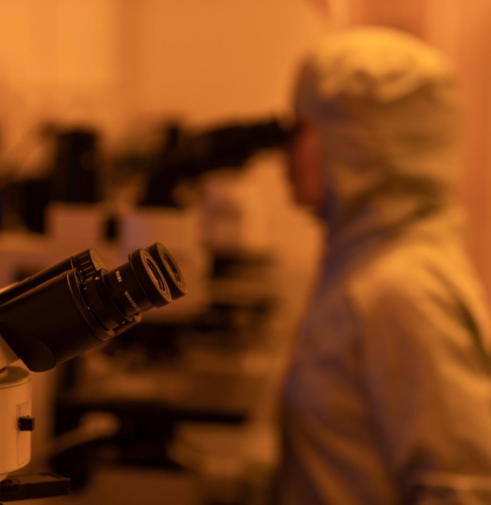Collaboration quantum research Leiden University and TU Delft: a natural choice
A longstanding, intensive collaboration exists between the research groups of physicists Sense Jan van der Molen (LION, Leiden University) and Herre van der Zant (Applied Sciences, TU Delft). Both researchers consider this partnership a natural choice. A joint interview.
What does your collaboration look like?
Sense Jan van der Molen (SJvdM): ‘We have been working together for twenty years in the field of molecular electronics or molecular conduction. We investigate how electrons flow through quantum systems, such as individual molecules. We've had several research programs in this area. Three or four, Herre?’
Herre van der Zant (HvdZ): ‘Four research programs: always between Leiden and Delft, small programs, very focused on a single topic, with around five PhD candidates.‘


What kind of research are you conducting now?
SJvdM: ‘Currently, we are studying a phenomenon called chirality-induced spin selectivity, CISS. It's quite fascinating: twenty years ago, an Israeli research group discovered a link between the chirality - whether a molecule is left- or right-handed - and the conduction of electrons, or electrical current."
"Electrons have a spin, an internal rotation, and we observe that electrons with a leftward spin flow better through a left-handed molecule than those with a rightward spin. Or vice versa, depending on the molecule, but there is a connection, and that's actually quite puzzling.‘
Why is it puzzling?
SJvdM: Well, there are two challenges. One: we don't have a good theoretical basis for it: the effect can be explained in principle. But not by this magnitude: we are off by a factor of a thousand. And that does pose a problem. And two: we find some of the experimental publications on this -how do I say this nicely? - "rather optimistic" in interpreting the results. Do I say that right, Herre?
HvdZ: 'Yes, then it concerns reference measurements that have not been done, or statistics that have not been clearly described. So we also did a lot of measurements, in Delft and in Leiden. And then we also see the phenomenon, only: not consistent, not reproducible. One day, your data align perfectly with what others show, but the next day, you measure something different."
SJvdM: 'That makes it elusive, but also very exciting, and the impact could be quite big.'

But aren’t Delft people known for bicycle mechanics and Leiden people for theorists?
SJvdM: 'Ha, that's the image yes. But there is a lot of experimental physics research in Leiden, besides theoretical research. We should actually highlight that better. But conversely, in Delft, there are also theoretical physicists working.’
Is the collaboration only about research?
HvdZ: 'No, for a very long time we taught a course together for students, molecular electronics, every other year in Delft and Leiden. However, we see that COVID-19 has had an impact. Students travel less now, you don't get them on the train anymore. They possibly do join via Zoom. But that doesn't work well, we wanted to build a community. Unfortunately, that course has been discontinued, also because two teachers are retiring. Anyway, after 20 years it is also good to renew again.'
And what about other research groups?
SJvdM: 'In physics, there are many more collaborations, for example in Quantum Computing, where a lot of theoretical work is done in Leiden, and experiments in Delft. But also in other areas, such as nanophysics and biophysics.
SJvdM: 'We also used to share many PhD students between Leiden and Delft, in the Casimir research school. They would spend some time at the other university. They also had a joint fieldtrip: sailing in Friesland. Casimir was linked to the joint NWO gravity program Nanofront, which is now coming to an end.'
HvdZ: 'Casimir and Nanofront both worked very well to strengthen ties, which, by the way, were already there to some extent.'
